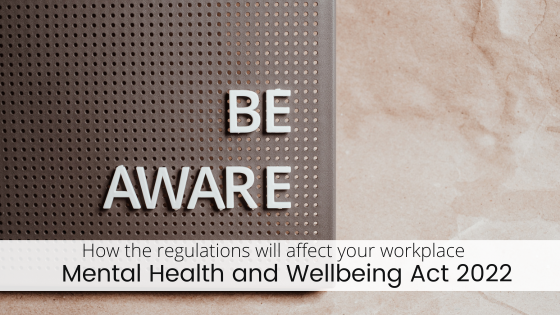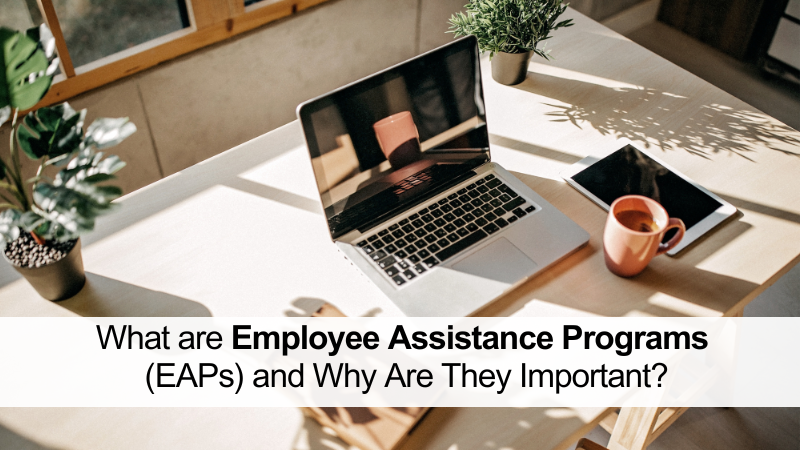The introduction of the Mental Health and Wellbeing Act 2022 and Occupational Health and Safety Amendment (Psychological Health) Regulations is a call to action for workplaces to prioritise mental health. Here’s how the two pieces of legislation impact workplaces in general:
- Emphasis on collaboration and safety: The Act encourages collaboration between service providers and stresses the importance of health, safety, and wellbeing. This means workplaces and mental health providers must work together to develop and implement policies and practices that promote mental health and wellbeing. It also mandates that employers create a safe and supportive environment for employees who are struggling with mental health challenges. The Regulations require employers to keep records of their compliance with the Regulations including records of any activities conducted with the help of a mental health provider.
- A proactive approach to mental health: Under the regulations, employers must identify and assess the risks of psychological harm in their workplace. This includes considering factors such as the work environment, the nature of the work, and the demands placed on employees. Employers must also take steps to control the risks of psychological harm. This may include providing training, implementing flexible work arrangements, and promoting a supportive workplace culture.
- A health-centred approach to treating mental health issues: No risk mitigation strategy is infallible, so The Act and Regulations take a health-centred approach to mental health, emphasising early intervention, treatment, and prevention when issues do arise. This means workplaces should be prepared to identify and respond to incidents of psychological harm early on and in an appropriate manner. This may include investigating the incident, providing support to the employee, and taking steps to prevent similar incidents from happening in the future. Part of this process should include providing employees with access to mental health services, either through their workplace or through other providers, and it may also include providing sick leave or other forms of support.
- Information sharing with respect: The Act allows for information sharing between service providers and family members, but it also puts safeguards in place to protect privacy and prevent harm. This means workplaces should be transparent about how they will use and share information about employees’ mental health. They should also obtain consent from employees before sharing information with others.
Responsibilities for health organisations
Health organisations have a particular responsibility to promote mental health and wellbeing in the workplace and The Act lays out specific actions you’ll need to take if yours is a health-related organisation. These include:
- Providing training to staff on mental health awareness and first aid
- Creating a supportive and inclusive workplace culture that’s free from discrimination and stigma for your staff and their patients
- Offering mental health support services to employees
- Responding promptly to mental health concerns

Responsibilities for non-health workplaces
If your business isn’t in the healthcare industry, you also have a responsibility to promote mental health and wellbeing in your workplace. You need to be able to get your staff that support when needed. Here’s what the legislation says your responsibilities are:
- Creating a workplace culture that is free from stigma and discrimination
- Providing flexible work arrangements to support employees’ mental health needs
- Offering mental health awareness training to staff
- Providing access to mental health resources
Consequences of not preventing or remedying mental health issues
Workplaces that fail to prevent or remedy mental health issues may face a number of natural consequences, including:
- Increased absenteeism
- Reduced productivity
- Increased staff turnover
- Lawsuits
- Damage to the workplace culture
The specific consequences and fines that may be faced by a workplace failing to comply with either piece of legislation will depend on the specific circumstances of the case. However, it’s important to note the Act and regulations do provide for significant penalties for non-compliance.
If you’re a workplace manager, it’s important to be aware of the new requirements of the Mental Health and Wellbeing Act 2022 and the Occupational Health and Safety Amendment (Psychological Health) Regulations and to take steps to comply with them. By doing so, you can create a healthier and more productive workplace for your employees.
The interplay between the new act and the Occupational Health and Safety Amendment (Psychological Health) Regulations
Together, the Mental Health and Wellbeing Act 2022 and the Occupational Health and Safety Amendment (Psychological Health) Regulations present a united front in the battle against psychological harm in the workplace. Though they differ in scope and approach, both pieces of legislation signal a shift in the way mental health is handled in the workplace. Employers must now take an active role in fostering an environment where mental wellbeing is prioritised. Here’s what you need to know about how the two pieces of legislation work together.
Identifying and managing psychosocial risks
The Regulations specifically call for employers to evaluate the risks of psychological harm in their workplace. This includes examining factors such as work demands, environment, and potential stressors. Once you’ve identified these risks in your workplace, you must take action to control them, be it through training, flexible work arrangements, or other support systems.
Promoting a culture of care
The legislation goes further than just preventing harm. The Act highlights the importance of taking a health-centered approach to mitigating workplace psychosocial risks by embracing early intervention and treatment. This means going beyond risk management and actively cultivating a workplace culture where mental health is integrated into all aspects of life. It’s not merely about averting a crisis; it’s about creating an environment where employees thrive mentally, emotional, and physically.
Staying informed and engaged
The Act is new and the Regulations haven’t yet been finalised, so the exact way they’re implemented will continue to evolve. As such, it’s crucial for employers to understand the nuances of both and to seek legal advice where needed. Keeping abreast of the specific requirements and remaining engaged with evolving interpretations will help you remain compliant.
Working towards a safe and supportive work environment for everyone
The Victorian Mental Health and Wellbeing Act 2022 and Occupational Health and Safety Amendment (Psychological Health) Regulations are a statement on the value we place on mental health in our society and our workplaces. By understanding and aligning with these changes, you can ensure your workplace is equipped to foster an environment where mental wellbeing is nurtured, not neglected. It’s not merely about compliance; it’s about embracing a culture where every individual’s mental health is valued and protected. After all, a healthy mind is at the core of a thriving workplace and community.
AUTHOR Michelle Robertson (Trudgen), Clinical Director, ACT Curious.
CONTACT US 📞 0438 922 979 (Australia Wide) email: hello@actcurious.com
DISCLAIMER The content of this blog is not intended to be a substitute for professional medical advice, diagnosis, or treatment.
COPYRIGHT © ACT Curious Pty Ltd, 2023.






